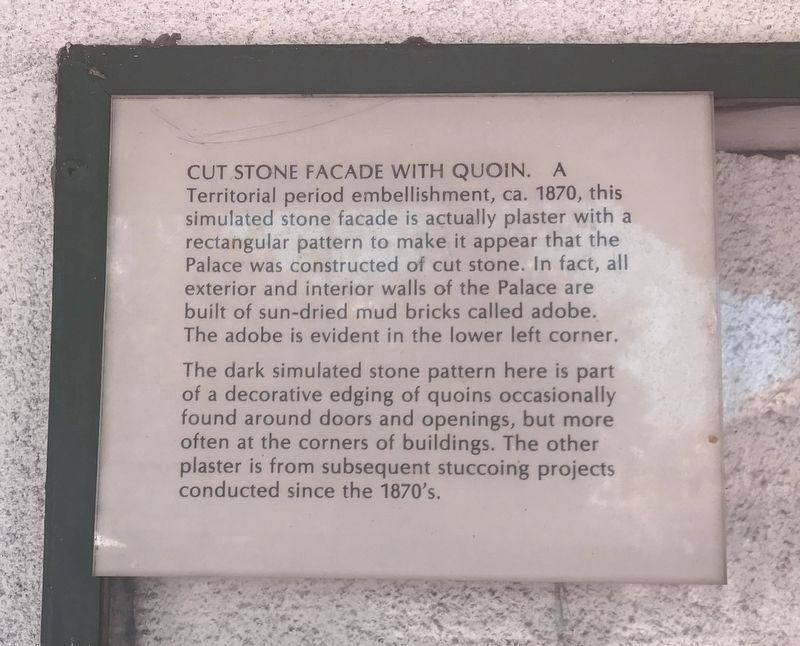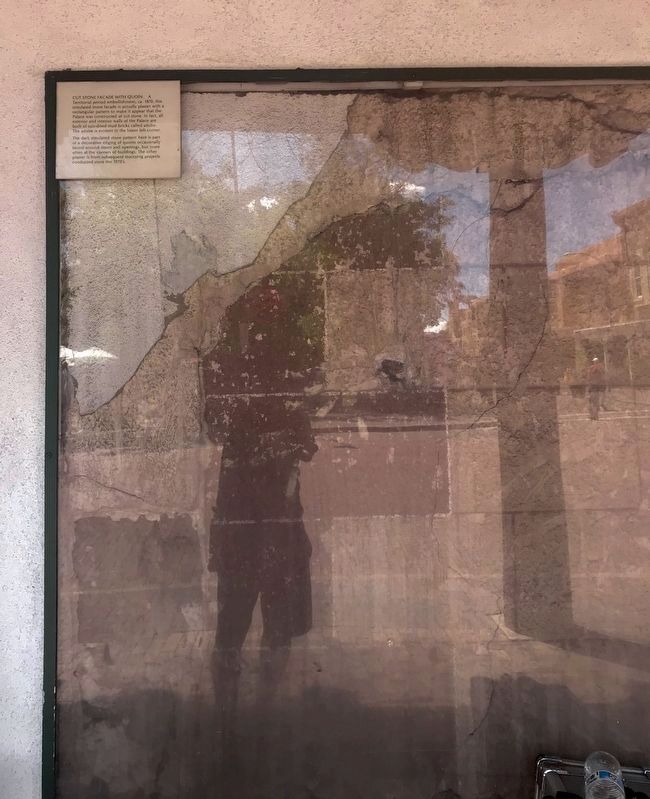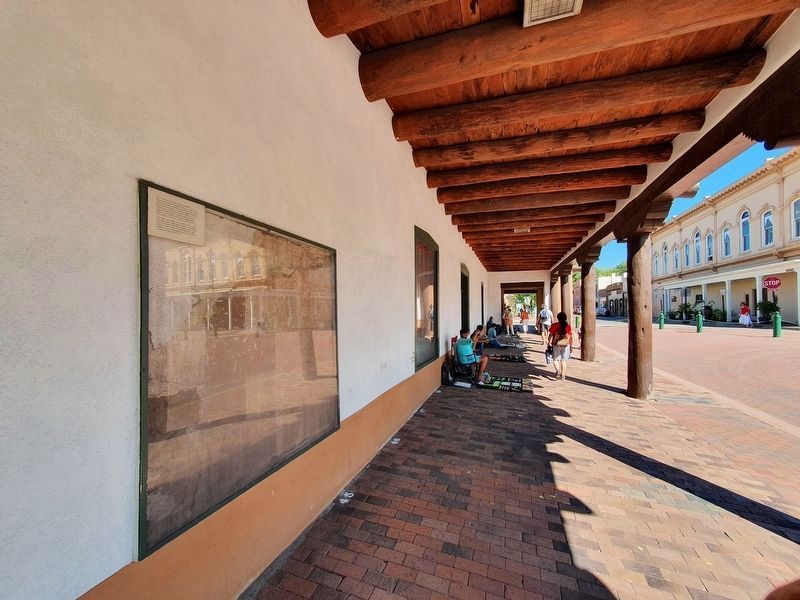Santa Fe in Santa Fe County, New Mexico — The American Mountains (Southwest)
Cut Stone Facade with Quoin
The dark simulated stone pattern here is part of a decorative edging of quoins occasionally found around doors and openings, but more often at the corners of buildings. The other plaster is from subsequent stuccoing projects conducted since the 1870's.
Topics. This historical marker is listed in this topic list: Architecture. A significant historical year for this entry is 1870.
Location. 35° 41.265′ N, 105° 56.284′ W. Marker is in Santa Fe, New Mexico, in Santa Fe County. Marker is at the intersection of Old Santa Fe Trail and Washington Avenue, on the right when traveling west on Old Santa Fe Trail. Touch for map. Marker is in this post office area: Santa Fe NM 87501, United States of America. Touch for directions.
Other nearby markers. At least 8 other markers are within walking distance of this marker. El Palacio Real (a few steps from this marker); Annexation of New Mexico (a few steps from this marker); Site of Santa Fe’s First Chapel (within shouting distance of this marker); Hitching Post at the End of the Trail (within shouting distance of this marker); To the Heroes (within shouting distance of this marker); Fray Angélico Chávez (within shouting distance of this marker); End of Santa Fe Trail (within shouting distance of this marker); The Spitz Clock (within shouting distance of this marker). Touch for a list and map of all markers in Santa Fe.
Also see . . . The Palace of the Governors (New Mexico History Museum).
"Situated on the north side of the historic Santa Fe Plaza, the Palace of the Governors is a beloved icon, complex symbol, and anchor for the New Mexico History Museum.(Submitted on August 7, 2021.)
Dating back to 1610, the Palace is the oldest public building in continuous use constructed by European settlers in the continental United States. Built by the Spanish for colonial administration, the structure has been extensively modified over the centuries to meet changing needs and stylistic interests. In addition to Spanish colonial life, the Palace has associations with the Pueblo Revolt (1680–1692), a brief period of Mexican rule (1821–1848), settlement as an American territory (1848–1912), and statehood for New Mexico (1912–present)."
Credits. This page was last revised on September 19, 2021. It was originally submitted on August 7, 2021, by Andrew Ruppenstein of Lamorinda, California. This page has been viewed 161 times since then and 12 times this year. Photos: 1, 2. submitted on August 7, 2021, by Andrew Ruppenstein of Lamorinda, California. 3. submitted on September 19, 2021, by J. Makali Bruton of Accra, Ghana. 4. submitted on August 7, 2021, by Andrew Ruppenstein of Lamorinda, California.



